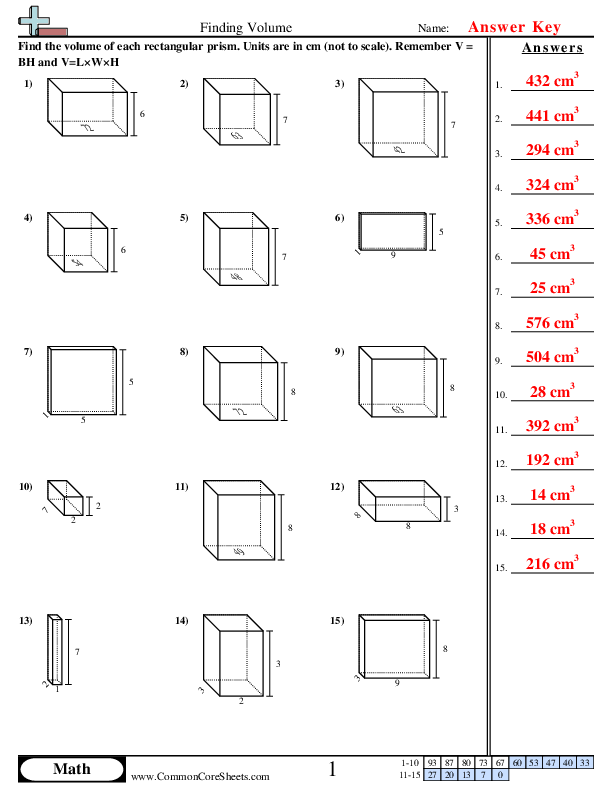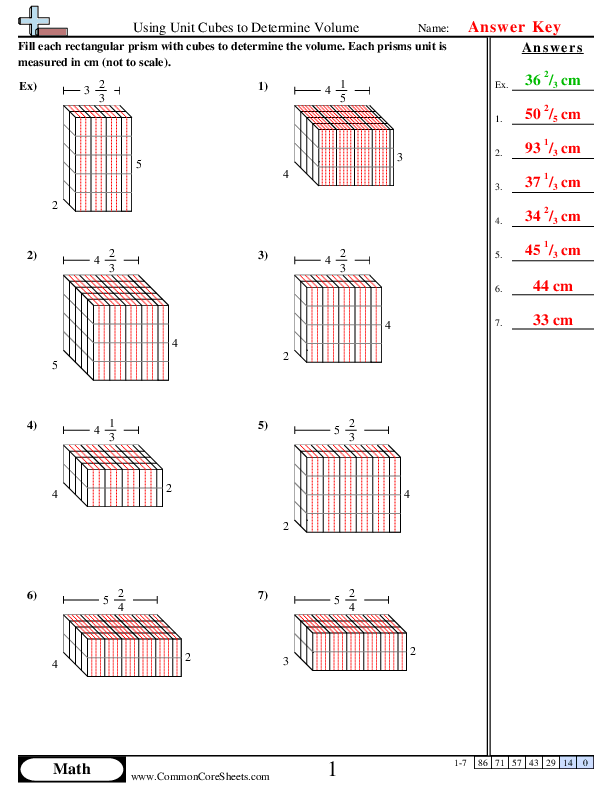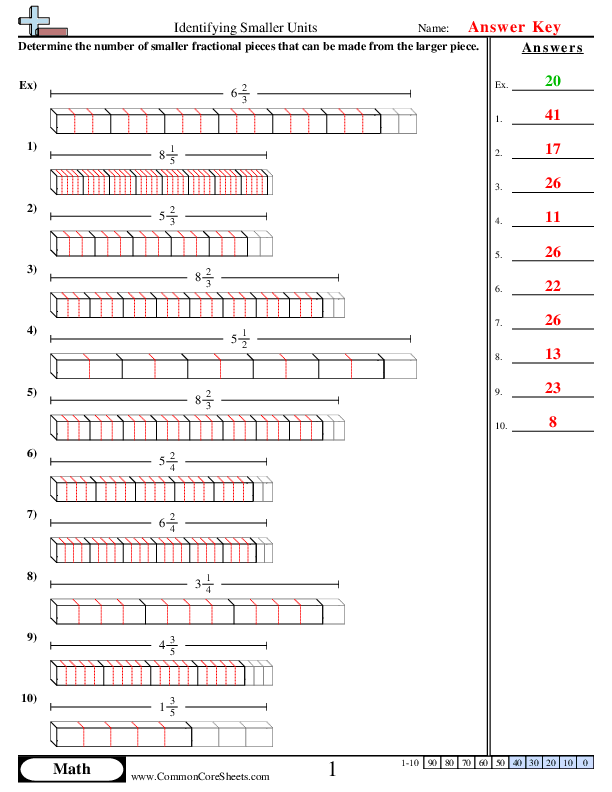Browse Sheets By Problem Type
×

Finding Volume Transparent
6g2


×
Description:
"This worksheet is designed to help children understand and master finding volume in math. It contains 15 problems that involve calculating volume, providing real, practical examples. The worksheet is highly versatile and customizable, allowing the possibility of conversion into flashcards for enhanced memory training. It's also suitable for use in distance learning settings, serving as an excellent resource for educators and parents alike."

×
Student Goals:
Understanding of Volume ConceptsAfter completing the worksheet, students will have a solid understanding of volume concepts. They will have deep dived into what volume is and how it can be calculated. This is crucial in their mathematical journey as the concept of volume widely applies in different areas of study including geometry and physical science.Ability to Solve Volume ProblemsThe completion of the worksheet equips students with the necessary skills to independently solve volume problems. With a range of problems tackled in the task, they should be flexible and confident in solving volume-related questions. These problem-solving skills will be useful in their daily life where volume measurements are common.Enhanced Numerical SkillsBy working through the various volume problems, students will undoubtedly enhance their numerical skills. This includes both mental arithmetic skills and the ability to manipulate numbers. Such skills are foundational for other complex mathematical problem-solving requirements.Appreciation of Math in Daily LifeLastly, the worksheet helps to establish the connection between mathematics, particularly the concept of volume, and the real world. It helps in instilling a practical perspective in students' mind. By completing the task, they will fully comprehend that math is not just an abstract subject studied in school, but a vital part of everyday life.Improved Mathematical LanguageCompleting math worksheets also helps students to familiarize themselves with mathematical language and conventions, using them appropriately in various contexts. They will be able to demonstrate increased proficiency in mathematical communication, especially regarding volume measurements.



Using Cubes to Find Volume (Fractional Sides)
6g2


×
Description:
"This worksheet is designed to engage children in learning mathematics, specifically volume calculation using unit cubes. With seven unique problems, kids can unravel basic principles of geometry in an interactive way. The worksheet content is customizable, ideal for distance learning, and can also be converted into flash cards to enhance children's learning experience."

×
Student Goals:
Understanding of Volume ConceptsCompleting this worksheet would enable students to gain a solid understanding of the concept of volume. They would be able to define volume, recognize it as a measure of space occupied by a 3-dimensional object, and understand how it is measured in cubic units.Skill in Using Unit CubesThis worksheet is designed to inculcate in students the ability to use unit cubes to determine the volume of a structure. They learn to stack and count unit cubes, and to visualize 3-dimensional shapes constructed using these cubes. This ability is critical not only in understanding volume in math but is also an important spatial reasoning skill.Comprehension of Mathematical RepresentationsAn important goal of this worksheet is to enable students to decipher and interpret mathematical representations and diagrams. They would become proficient in discerning the dimensions of given structures with the help of such representations.Numeracy SkillsThese problems hone numeracy skills. Effective completion of the worksheet should boost students' abilities to perform basic mathematical operations and use these operations to work out the volume of various structures accurately.Problem-solving SkillsDetermining volume using unit cubes is a methodical process that requires careful counting and calculating. It demands keen attention to detail and systematic working. By resolving these worksheet problems, students gradually build sound problem-solving skills, which are a vital aspect of an individual’s cognitive development and are essential across various life scenarios.Application AbilitiesLastly, after doing the worksheet, students should be able to apply their knowledge of volume to find the volume of other similar structures beyond the classroom. This application ability is central to the principle of mathematics and empowers students to engage with their spatial environment more effectively.




